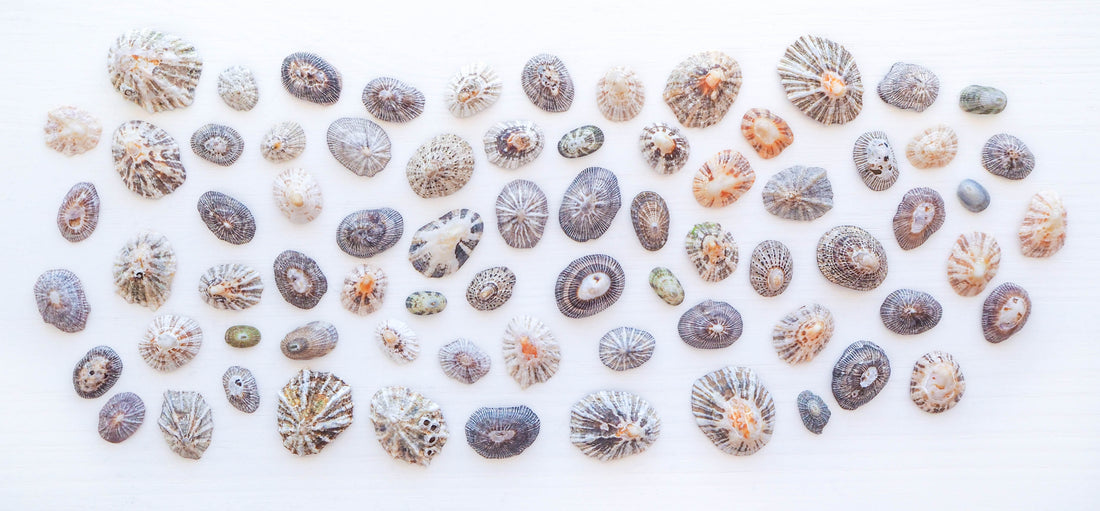
Limpet Shells || Patella
Share
- Scientific name: Patella vulgata, Patella caerulea, Patella rustica, Patella ulyssiponensis or Patella pellucida
- Size: Between 0.7 to 7 cm
- Color: White, grey, yellow, cream, orange, green, or brown
- Family: Patellidae
- Fun fact: Limpet Shells are made of calcium carbonate, the same material is found in pearls.
Limpets are a type of marine gastropod mollusk that are commonly found along the coasts of Portugal. Their shells, in a variety of shapes and colors, are a testament to nature's creativity.
There are many species of these Limpet Shells but the most common species found in Portugal are the Mediterranean Limpet (Patella caerulea) and the Common Limpet or European Limpet (Patella vulgata). This species is widely distributed along the rocky shores of the Atlantic Ocean and Mediterranean Sea.
To not make it too complicated, this blog will generally be about all species of Limpet Shells that can be found in Portugal and the Mediterranean.

Appearance
While Limpet Shells often are invisible and muddy from a distance, when looking closely different patterns and earthy tones are shown.
The coloration of the Limpet Shells can vary but often includes shades of grey, brown, or green. These earthy tones are helping the Limpet blend in with its rocky surroundings and provide camouflage against predators.

Limpet Shells are typically conical or cap-shaped with a flattened apex. The shells are composed of calcium carbonate, the same material is found in pearls and other mollusk shells, giving the Limpets their protection for the soft body and inside gloss.
Limpet Shells come in a variety of sizes, with some species growing to just a few millimeters in diameter, while others can reach several inches across, depending on factors such as species, age, and environmental conditions.


Habitat
Limpets are commonly found on rocky shores and intertidal zones, where they cling tightly to rocks using a muscular foot providing protection and camouflage. In Portugal, they can be found along the entire coastline, from the northern region to the southern region of the Algarve.
Other areas where Limpet Shells can be found are the waters of Western Europe, throughout the Mediterranean and the north-east Atlantic.


Limpets are important grazers, feeding on algae and other microorganisms, which helps to control algal growth and maintain ecological balance in rocky intertidal habitats. Therefore it makes Limpets play a vital role in the coastal ecosystem.
Cultural & Culinary
In many coastal communities, Limpet Shells are harvested for food, particularly in regions where there is a tradition of gathering seafood like Portugal, Spain and Ireland.
Limpets are often prepared by boiling or grilling and are enjoyed as a delicacy in Portuguese cuisine as "lapas". I've never tried them myself, but it seems these molluks are very tasteful.

Overall, Limpets and their shells are an integral part of the coastal ecosystem in our ocean, contributing to biodiversity and supporting traditional cultural practices related to coastal living and cuisine.
Interested in jewelry or artwork with Limpet Shells? Click here to see all that are available.
